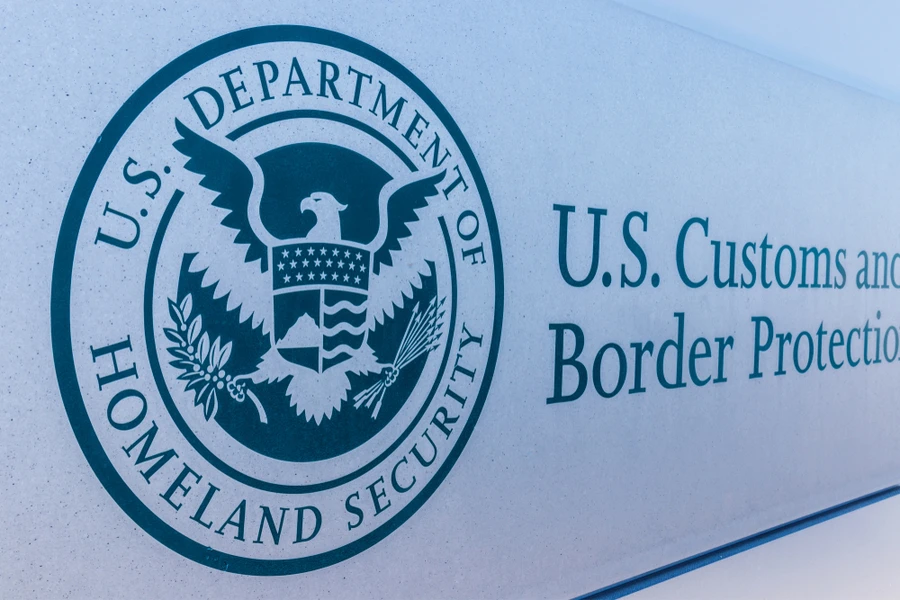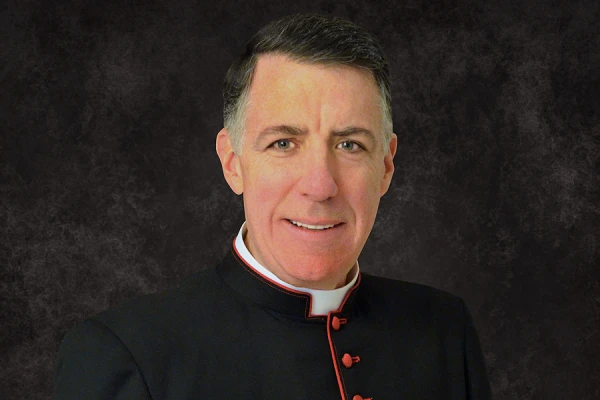
Brownsville, Texas, Feb 18, 2019 / 01:00 pm (CNA).- President Donald Trump’s declaration of a national emergency on the southern border has again raised the possibility of a barrier being constructed through La Lomita Historical Park, blocking access to an historic chapel on the site.
A recent congressional funding compromise allocated more than a billion dollars for border barrier construction, but expressly forbid the use of appropriated funds to construct a barrier through La Lomita and a handful of other locations. But the president’s subsequent moves to access other sources of funding for the project have raised questions about the effectiveness of the site’s congressional protection.
La Lomita Historical Park is a small park located in Mission, Texas, which contains the La Lomita Chapel, built in 1865. The chapel is owned by the Diocese of Brownsville and administered by the nearby Our Lady of Guadalupe Catholic Church. If the border wall were to be constructed as planned, the chapel would be located on the southern side of the wall and would be much harder to access by the wider community.
On Feb. 15, President Trump signed the Consolidated Appropriations Act into law, which included the stipulation that “none of the funds made available by this Act or prior Acts are available for the construction of pedestrian fencing” or any other barrier in La Lomita Historical Park.
That bill allocated $1.3 billion in funding for the border wall, far short of the $5.7 billion Trump had requested.
The same day Trump signed the bill into law, he declared a national emergency along the southern border and invoked the National Emergencies Act. The declaration is expected to grant Trump access to the remainder of the funds he had requested to build a border wall, plus further additional funding.
With the national emergency declaration, it is now uncertain if the exclusion of the La Lomita site and the other locations specifically mentioned in the bill remains intact, as the emergency funding may not be subject to the same spending restrictions as the money allocated by Congress.
On Friday, the Wall Street Journal cited a senior administration official who claimed that the White House considers the restrictions in the appropriations bill only to apply to the $1.3 billion it allocated by Congress, and not to the additional money accessed by the emergency declaration.
A source familiar with the case told CNA that there is no clear precedent to determine whether or not the emergency funds can be used to build in La Lomita Historical Park.
The source told CNA that an argument could be made that, by including the exemption in the appropriations bill, Congress had prohibited the use of any funds for border wall construction in those specific places, and that any attempt by the administration to build in the exempted areas would be highly contentious.
Shortly after the emergency declaration was announced, California Attorney General Xavier Becerra announced he would be filing suit against the Trump Administration to dispute whether the current situation on the U.S.-Mexico border constitutes an emergency.
The Diocese of Brownsville has been contesting the possible construction of a border wall near La Lomita Chapel for months.
Earlier in February, a federal judge ruled against the diocese, who had argued that allowing the government to survey the land around the chapel to determine its suitability for a wall was a violation of religious freedom. The judge ruled that the act of surveying land did not require or impede access to the chapel or the exercise of religious liberty.
Lawyers representing the Diocese of Brownsville told CNA that they were not surprised by this decision, but felt as though they would have a stronger case if the construction of the wall were to move forward and cut off worshippers’ access to La Lomita Chapel.
In response to the passage of the appropriations act and the declaration of emergency by the president, Bishop Daniel Flores of Brownsville released a statement to CNA calling the congressional exemptions “commendable” given the “the significance of the La Lomita chapel to the Catholic community” and to the history of the region.
Flores then said that he would be praying that those charged with planning any construction would use prudence in making their decisions.
“I pray that in the days to come a spirit of good will and good judgment will animate all of our national leaders as they make decisions that affect daily life in our local communities along the Border,” Flores said.
If you value the news and views Catholic World Report provides, please consider donating to support our efforts. Your contribution will help us continue to make CWR available to all readers worldwide for free, without a subscription. Thank you for your generosity!
Click here for more information on donating to CWR. Click here to sign up for our newsletter.




“La Lomita Historical Park is a small park located in Mission, Texas, which contains the La Lomita Chapel, built in 1865. The chapel is owned by the Diocese of Brownsville and administered by the nearby Our Lady of Guadalupe Catholic Church. If the border wall were to be constructed as planned, the chapel would be located on the southern side of the wall and would be much harder to access by the wider community.”
What ? If it’s in Mission, Texas then it shouldn’t be on the southern side ofa border wall — that would put it in Mexico wouldn’t it ? It was built after Texas had become a state, so there should have been no confusion about where Texas ended and Mexico began.